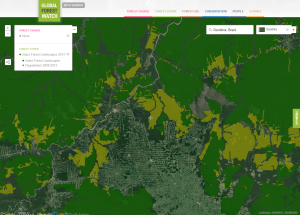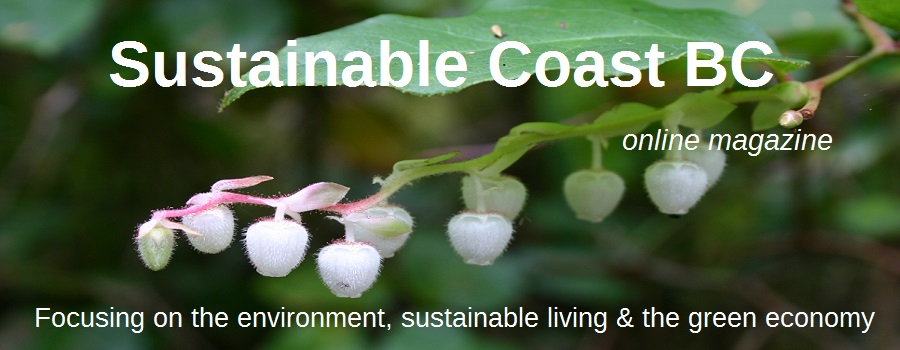Transitioning
- Details
- Category: Uncategorised Uncategorised
- Published: 08 October 2014 08 October 2014
A new satellite study reveals that since 2000 more than 104 million hectares of forests – an area three times the size of Germany – have been destroyed or degraded.
“Every four seconds, an area of the size of a football (soccer) field is lost,” said Christoph Thies of Greenpeace International.
The extent of this forest loss, which is clearly visible in satellite images taken in 2000 and 2013, is “absolutely appalling” and has a global impact, Thies told IPS, because forests play a crucial in regulating the climate.
The current level of deforestation is putting more CO2 into the atmosphere than all the world’s cars, trucks, ships and planes together, he said, adding that “governments must take urgent action” to protect intact forests by creating more protected areas, strengthening the rights of forest communities and other measures, including convincing lumber, furniture manufacturers and others to refuse to use products from virgin forests.
Greenpeace is one of several partners in the Intact Forest Landscapes initiative, along with the University of Maryland, World Resources Institute and WWF-Russia among others, that uses satellite imagery technology to determine the location and extent of the world’s last large undisturbed forests.
The new study found that half of forest loss from deforestation and degradation occurred in just three countries: Canada, Russia and Brazil. These countries are also home to about 65 percent of world’s remaining forest wilderness.
However, despite all the media attention on deforestation in the Amazon forest and the forests of Indonesia, it is Canada that has been leading the world in forest loss since 2000, accounting for 21 percent of global forest loss. By contrast, the much-better known deforestation in Indonesia has accounted for only four percent.
Brazil's Amazon forest - 2013.  Credit_Courtesy of Global Forest Watch
Credit_Courtesy of Global Forest Watch
Massive increases in oil sands and shale gas developments, as well as logging and road building, are the major cause of Canada’s forest loss, said Peter Lee of Global Forest Watch Canada, an independent Canadian NGO.
A big increase in forest fires is another cause of forest loss. Climate change has rapidly warmed northern Canada, drying out the boreal forests and bogs and making them more vulnerable to fires.
In Canada’s northern Alberta’s oil sands region, more than 12.5 million hectares of forest have been crisscrossed by roads, pipelines, power transmission lines and other infrastructure, Lee told IPS.
Canada’s oil sands and shale gas developments are expected to double and possibly triple in the next decade and “there’s little interest at the federal or provincial political level in conserving intact forest landscapes,” Lee added.
The world’s last remaining large undisturbed forests are where most of the planet’s remaining wild animals, birds, plants and other species live, Nigel Sizer, Global Director of the Forest Programme at the World Resources Institute, told a press conference.
Animals like Siberian tigers, orangutans and woodland caribou require large areas of forest wilderness, Sizer noted, and “losing these top species leads to a decline of entire forest ecosystems in subtle ways that are hard to measure.”
While forests can re-grow, this takes many decades, and in northern forests more than 100 years. However, if species go extinct or there are too few individuals left, it will take longer for a full forest ecosystem to recover – if ever.
Trees, plants and all the creatures that make up a healthy forest ecosystem provide humanity with a range of vital services including storing and cleaning water, cleaning air, soaking up CO2 and producing oxygen, as well as being sources of food and wood. These ‘free’ services are often irreplaceable and generally worth far more than the value of lumber or when converted to cattle pasture, said Sizer.
In just 13 years, South America’s Paraguay converted an incredible 78 percent of its remaining forest wilderness mainly into large-scale soybean farms and rough pasture, the study found. Satellite images and maps on the new Global Forest Watch website offer see-it-with-your-own eyes images of Paraguay’s forests vanishing over time.
The images and data collected for the study are accessible via various tools on the website. They reveal that 25 percent of Europe’s largest remaining forest, located 900 km north of Moscow, has been chopped down to feed industrial logging operations. In the Congo, home of the world’s second largest tropical forest, 17 percent has been lost to logging, mining and road building. The Global Forest Watch website also shows details of huge areas of Congo forest licensed for future logging.
Deforestation starts with road building, often linked to logging and extractive industries, said Thies. In some countries, like Brazil and Paraguay, the prime reason is conversion to large-scale agriculture, usually for crops that will be exported.
The new data could help companies with sustainability commitments in determining which areas to avoid when sourcing commodities like timber, palm oil, beef and soy. Market-led efforts need to gain further support given the lax governance and enforcement in many of these forest regions, Thies said.
He called on the Forest Stewardship Council (FSC) – a voluntary certification programme that sets standards for forest management – to “also play a stronger role” and to improve those standards in order to better protect wilderness forests.
Without urgent action to curb deforestation, it is doubtful that any large-scale wild forest will remain by the end of this century, concluded Sizer.
First published on IPS
